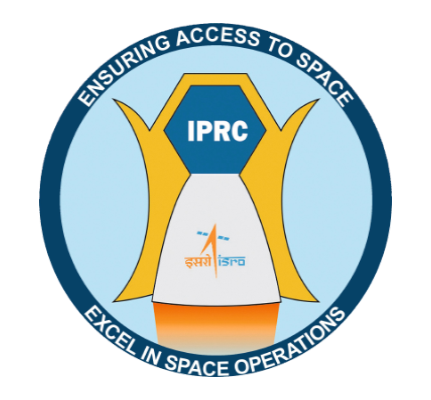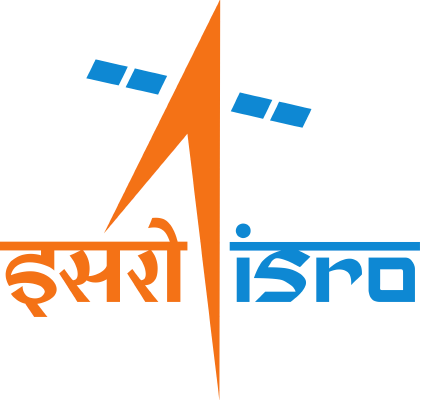1. Who is considered as the "founding father" of Indian Space Programme?
Dr Vikram A Sarabhai is considered as the founding father of space programmes in India.
2. Where the Space Programme began in India?
Indian Space Programme began at Thumba Equatorial Rocket Launching Station (TERLS) located at Thumba near Thiruvanathapuram.
3. When was ISRO formed?
ISRO was formed on August 15, 1969.
4. When was Department of Space constituted?
Department of Space (DOS) and the Space Commission were set up in 1972. ISRO was brought under DOS on June 1, 1972.
5. What is the role of Space Commission and the Department of Space?
Space Commission formulates the policies and oversees the implementation of the Indian space programme to promote the development and application of space science and technology for the socio-economic benefit of the country. Department of Space (DoS) implements these programmes through, mainly, ISRO, Physical Research Laboratory (PRL), National Atmospheric Research Laboratory (NARL), North Eastern-Space Applications Centre (NE-SAC) and Semi-Conductor Laboratory (SCL). Antrix Corporation Ltd., and NewSpace India Limited, Government owned Public Sector Units are set up for commercialization of R&D activities of DoS/ISRO.
6. How many Centres are there in ISRO?
There are seven major Centres and several other Units, Facilities and Laboratories spread across the country.
7. What is the major function of these Centres?
Design and development of launch vehicle technology at VSSC,; Satellites are designed and developed at URSC; SDSC SHAR provides Launch Base Infrastructure for launch; Development of liquid stages and cryogenic stage is carried out at LPSC, Sensors for Communication and Remote Sensing satellites and application aspects of the space technology are taken up at SAC; Remote Sensing satellite data reception processing and dissemination by NRSC and HSFC for the execution of Gaganyaan programme and to take up sustained activities in human space flight arena.
8. Where are these Centres located?
Vikram Sarabhai Space Centre (VSSC) at Thiruvananthapuram; U R Rao Satellite Centre (URSC) at Bengaluru; Satish Dhawan Space Centre (SDSC – SHAR) at Sriharikota; Liquid Propulsion Systems Centre (LPSC) at Thiruvananthapuram and Bengaluru, Space Application Centre (SAC) at Ahmedabad, National Remote Sensing Centre (NRSC) at Hyderabad and Human Space Flight Centre (HSFC) at Bengaluru.
1. Which are the ISRO Propulsion Complex used in PSLV, GSLV & LVM3 ?
In PSLV, the second and fourth stages viz PS2 and PS4 stages are powered by liquid propulsion engines. The PS2 stage is powered by a Vikas engine with 800kN thrust and stage propellant loading of 40 tons. The fourth stage is powered by two PS4 engines delivering 14.7kN thrust with stage propellant loading of 1.6 to 2.6 tons. Besides, PSLV first stage uses liquid propulsion based Control Power Plants namely SITVC and RCS for Pitch, Yaw and Roll control.
In GSLV, the 4 nos of L40 strapons are liquid propulsion Vikas engine powered stages. Besides, the second stage, GS2 is also vikas engine based liquid propulsion stage. The upper stage is an indigenously developed cryogenic engine having 75 kN thrust.
In GSLV, the 4 nos of L40 strapons are liquid propulsion Vikas engine powered stages with propellant loading of 40 tons. Besides, the second stage, GS2 is also Vikas engine based liquid propulsion stage with propellant loading of 40 tons. The third stage uses cryogenic technology with engine delivering 75 kN thrust and stage propellant loading of 15 tons.
In LVM3, the core stage, L110 is a liquid propulsion stage with twin Vikas engine delivering 1600kN thrust with stage propellant loading of 110 tons. The upper stage is an indigenously developed cryogenic stage C25 powered by CE20 engine developing 200 kN thrust with stage propellant loading of 28 tons
In GSLV, the 4 nos of L40 strapons are liquid propulsion Vikas engine powered stages. Besides, the second stage, GS2 is also vikas engine based liquid propulsion stage. The upper stage is an indigenously developed cryogenic engine having 75 kN thrust.
In GSLV, the 4 nos of L40 strapons are liquid propulsion Vikas engine powered stages with propellant loading of 40 tons. Besides, the second stage, GS2 is also Vikas engine based liquid propulsion stage with propellant loading of 40 tons. The third stage uses cryogenic technology with engine delivering 75 kN thrust and stage propellant loading of 15 tons.
In LVM3, the core stage, L110 is a liquid propulsion stage with twin Vikas engine delivering 1600kN thrust with stage propellant loading of 110 tons. The upper stage is an indigenously developed cryogenic stage C25 powered by CE20 engine developing 200 kN thrust with stage propellant loading of 28 tons
2. What is cryogenic propulsion?
Cryogenic propulsion system uses propellants which are stored at low temperatures, below 123K. The commonly used cryogenic propellants are liquid Hydrogen (fuel) and Liquid Oxygen (Oxidiser). The combination of liquid Oxygen (boiling point 90K) and Liquid Hydrogen (boiling point 20K) is used for rocket propulsion. The cryogenic propulsion has a specific impulse of 450s to 460s. This is high compared with 260s to 275 s of solid propellants, 280s to 315s of earth storable propellants and 300s to 350s of semi cryo propulsion. This high performance is the driving factor to use cryogenic engines in terminal stages of launch vehicles.
3. Propulsion system used in spacecrafts?
The spacecraft is injected by the launch vehicle either in a low earth orbit or in a Geo-transfer orbit. Once injected into orbit, spacecraft require some form of propulsion throughout their operational life for numerous purposes. It is the spacecraft propulsion system that propels the spacecraft precisely in the desired orbit such as polar orbit, geosynchronous orbit etc. Moreover, the spacecraft propulsion system enables orienting the spacecraft in the orbit, controls and maintains the orbit and attitude as well as helps in manoeuvring the spacecraft on completion of end-of life. Majorly two types of propulsion system configurations, monopropellant system & bipropellant system are being used in various spacecraft missions of ISRO. Electric propulsion system is also being developed for spacecraft propulsion.
4. What are the major advantages of ISRO Propulsion Complex over the solid propulsion system?
The liquid propulsion system offers many advantages compared to solid propulsion viz. a) higher specific impulse b) termination of thrust when desired c) thrust can be controlled through proper thrust management system and d) restart capability.
5. Where are the activities of IPRC undertaken?
The IPRC activities are Assembly,Intergration,Testing of liquid, Cryogenic,Semi-Crygogenic,Satellite Propulsion Systems situated at Mahendragiri.
6. What are the ISRO Propulsion Complex deliverables for Aditya L1 mission?
The launch of Aditya-L1 by PSLV-C57 was accomplished successfully on Sep 02, 2023. In this mission, IPRC had played a significant role by delivering the earth storable liquid propulsion stage (PS2 Stage, PS4 Stage) and five Control Power Plants (PS1 RCS x 2 numbers, PS1 SITVC, PS0 SITVC x 2 Nos.) of the PSLV C57 Launch Vehicle. The details of above deliverables are:
PS2 Stage: It is powered by Vikas Engine producing a thrust of 80t and has a propellant loading of 42t. The PS2 Stage operated for about 150s in this mission.
PS4 Stage: It is powered by 2 Nos. of PS4 engines each producing a thrust of 0.73t thrust and has a propellant loading of 2.5t. The Stage had restart capability and had operated for 27.86s in its first burn followed by 471.5s in its second burn. The Stage had a long coasting period of 1640s between the burns.
The Control Power plants provide the necessary control of the Vehicle (viz. Pitch, Yaw and Roll) during the PS1 regime. Two numbers of Roll Control System Packages, 2 numbers of Strap on SITVC (Side Injection Thrust Vector Control) systems and one PS1 SITVC system were used in this mission.
IPRC also delivered the Bipropellant based Spacecraft Propulsion system consisting of primarily one LAM engine, 8 numbers of 22N, 4 numbers of 10N thrusters and associated propulsion elements like 390L propellant tanks, precision control components etc. which plays a crucial role in taking the spacecraft to Sun-Earth L1 point.
In addition, the Centre had also delivered 220 numbers of critical sensors which were used in both Launch Vehicle and Spacecraft.
PS2 Stage: It is powered by Vikas Engine producing a thrust of 80t and has a propellant loading of 42t. The PS2 Stage operated for about 150s in this mission.
PS4 Stage: It is powered by 2 Nos. of PS4 engines each producing a thrust of 0.73t thrust and has a propellant loading of 2.5t. The Stage had restart capability and had operated for 27.86s in its first burn followed by 471.5s in its second burn. The Stage had a long coasting period of 1640s between the burns.
The Control Power plants provide the necessary control of the Vehicle (viz. Pitch, Yaw and Roll) during the PS1 regime. Two numbers of Roll Control System Packages, 2 numbers of Strap on SITVC (Side Injection Thrust Vector Control) systems and one PS1 SITVC system were used in this mission.
IPRC also delivered the Bipropellant based Spacecraft Propulsion system consisting of primarily one LAM engine, 8 numbers of 22N, 4 numbers of 10N thrusters and associated propulsion elements like 390L propellant tanks, precision control components etc. which plays a crucial role in taking the spacecraft to Sun-Earth L1 point.
In addition, the Centre had also delivered 220 numbers of critical sensors which were used in both Launch Vehicle and Spacecraft.


